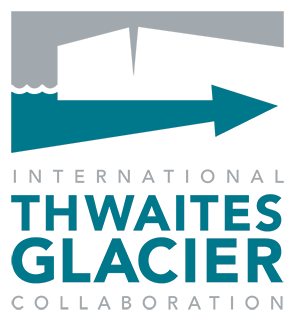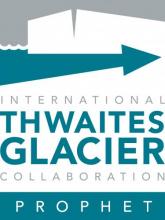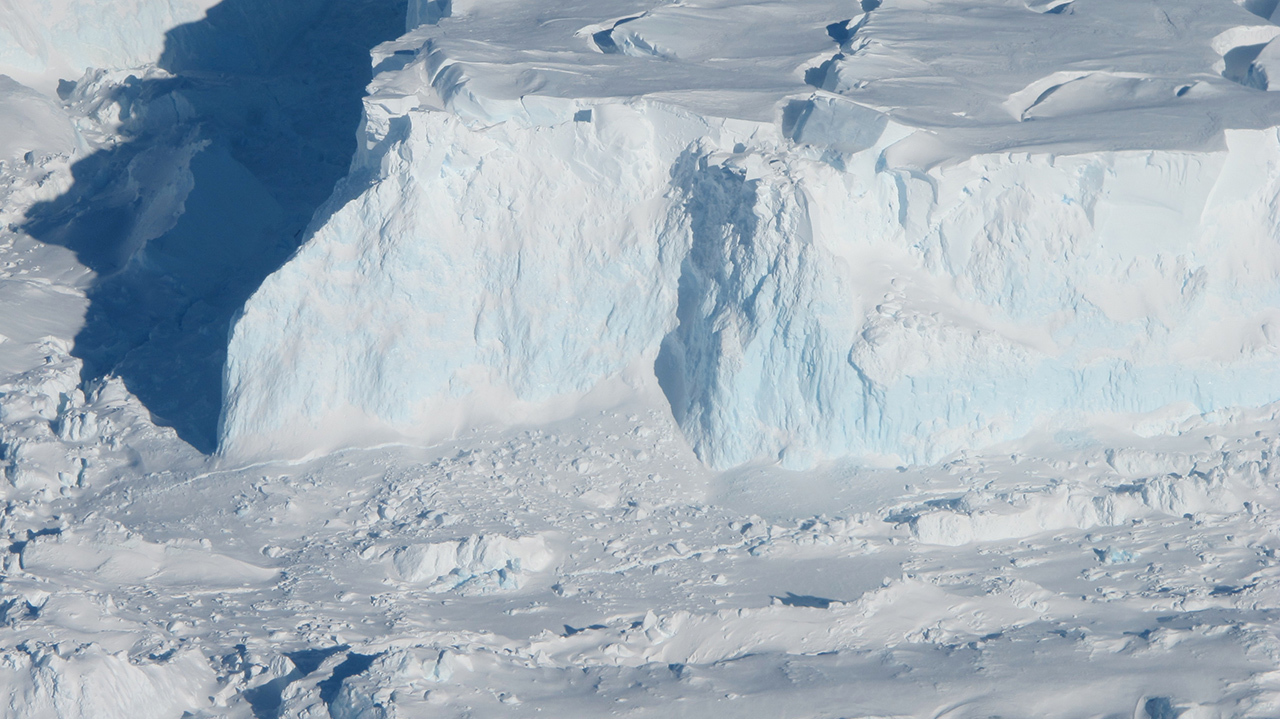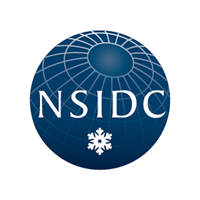Barnes, J. M., and G. H. Gudmundsson. 2022. The predictive power of ice sheet models and the regional sensitivity of ice loss to basal sliding parameterisations: a case study of Pine Island and Thwaites glaciers, West Antarctica. The Cryosphere 16, 4291–4304, 2022.
|
|
Bett, D. T., A. T. Bradley, C. R. Williams, P. R. Holland, R. J. Arthern and D. N. Goldberg. 2024. Coupled ice–ocean interactions during future retreat of West Antarctic ice streams in the Amundsen Sea sector. The Cryosphere Discussions 18, 2653–2675, 2024. |
|
Cheng, G., M. Morlighem, and G. H. Gudmundsson. 2024. Numerical stabilization methods for level-set-based ice front migration. Geosci. Model Dev., 17, 6227–6247. |
|
Christie, F. D. W., E. J. Steig, N. Gourmelon, S. F. B. Tett, and R. G. Bingham. 2023. Inter-decadal climate variability induces differential ice response along Pacific-facing West Antarctica. Nature Communications 14:93.
|
|
Das, I., M. Morlighem, J. Barnes, G.H. Gudmundsson, D. Goldberg, and T. Dias do Santos. 2023. In the Quest of a Parametric Relation Between Ice Sheet Model Inferred Weertman's Sliding-Law Parameter β2 and Airborne Radar-Derived Basal Reflectivity Underneath Thwaites Glacier, Antarctica. Geophysical Research Letters, 50, e2022GL098910. |
|
De Rydt, J., and G.H. Gudmundsson. 2016. Coupled ice shelf‐ocean modeling and complex grounding line retreat from a seabed ridge. Journal of Geophysical Research: Earth Surface 121(5): 865-880.
|
|
De Rydt, J., Reese, R., Paolo, F. S., and Gudmundsson, G. H. 2021. Drivers of Pine Island Glacier speed-up between 1996 and 2016. The Cryosphere 15, 113–132.
|
|
Dias dos Santos, T., M. Morlighem, and D. Brinkerhoff. 2022. A new vertically integrated MOno-Layer Higher-Order (MOLHO) ice flow model. The Cryosphere 16, 179–195.
|
|
dos Santos, T. D., M. Morlighem, and H. Seroussi. 2021. Assessment of numerical schemes for transient, finite-element ice flow models using ISSM v4.18. Geosci. Model Dev., 14: 2545–2573.
|
|
Thiago Dias dos Santos, Jowan M. Barnes, Daniel N. Goldberg, G. Hilmar Gudmundsson, Mathieu Morlighem. 2021. Drivers of Change of Thwaites Glacier, West Antarctica, Between 1995 and 2015. Geophysical Research Letters 48:20 e2021GL093102.
|
|
Favier, L., G. Durand, S.L. Cornford, G.H. Gudmundsson, O. Gagliardini, F. Gillet-Chaulet, T. Zwinger, A.J. Payne, and A.M. Le Brocq. 2014. Retreat of Pine Island Glacier controlled by marine ice-sheet instability. Nature Climate Change 4(2): 117-121.
|
|
Gerli, C., Rosier, S., and Gudmundsson, G. H. 2023. Activation of existing surface crevasses has limited impact on grounding line flux of Antarctic ice streams. Geophysical Research Letters, 50, e2022GL101687. |
|
Getraer B. and M. Morlighem. 2025. Increasing the Glen–Nye Power-Law Exponent Accelerates Ice-Loss Projections for the Amundsen Sea Embayment, West Antarctica. Geophysical Research Letters 52, 7, e2024GL112516. |
|
Goldberg, D.N., K. Snow, P. Holland, J.R. Jordan, J.M. Campin, P. Heimbach, R. Arthern, and A. Jenkins. 2018. Representing grounding line migration in synchronous coupling between a marine ice sheet model and a z-coordinate ocean model. Ocean Modelling 125: 45-60.
|
|
Goldberg, D.N., P. Heimbach, I. Joughin, and B. Smith. 2015. Committed retreat of Smith, Pope, and Kohler Glaciers over the next 30 years inferred by transient model calibration. The Cryosphere 9: 2429-2446.
|
|
Goldberg, D. N., T. A. Smith, S. HK Narayanan, et al. 2020. Bathymetric influences on Antarctic ice-shelf melt rates. ESS Open Archive: October 22, 2020.
|
|
Gourmelen, N., L. Jakob, P. R. Holland, P. Dutrieux, D. Goldberg, S. Bevan, A. Luckman, and G. Malczyk. 2025. The influence of subglacial lake discharge on Thwaites Glacier ice-shelf melting and grounding-line retreat. Nat Commun 16, 2272. |
|
Gudmundsson, G. H., J. M. Barnes, D. N. Goldberg, and M. Morlighem. 2023. Limited impact of Thwaites Ice Shelf on future ice loss from Antarctica. Geophysical Research Letters 50, e2023GL102880. |
|
Gudmundsson, G.H., F.S. Paolo, S. Adusumilli, and H.A. Fricker. 2019. Instantaneous Antarctic ice‐sheet mass loss driven by thinning ice shelves. Geophysical Research Letters 46, 13,903–13,909.
|
|
Hill, E. A., G. H. Gudmundsson, and D. M. Chandler. 2024. Ocean warming as a trigger for irreversible retreat of the Antarctic ice sheet. Nat. Clim. Chang. 14, 1165–1171 (2024). |
|
Karplus, M.S., T.J. Young, S. Anandakrishnan, J.N. Bassis, E.H. Case, A.J. Crawford, A. Gold, L. Henry, J. Kingslake, A.A. Lehrmann, P.A. Montano, E.C. Pettit, T.A. Scambos, E.M. Sheffield, E.C. Smith, M. Turrin, and J.S. Wellner. 2022. Strategies to Build a Positive and Inclusive Antarctic Field Work Environment. Annals of Glaciology 63, no. 87–89: 125–31. |
|
Malczyk, G., N. Gourmelen, D. Goldberg, J. Wuite, and T. Nagler. 2020. Repeat Subglacial Lake Drainage and Filling Beneath Thwaites Glacier. Geophysical Research Letters, 47:23, e2020GL089658.
|
|
Morlighem, M., Rignot, E., Binder, T. et al. 2020. Deep glacial troughs and stabilizing ridges unveiled beneath the margins of the Antarctic ice sheet. Nat. Geosci. 13, 132–137.
|
|
Morlighem, M., D. Goldberg, T. Dias dos Santos, J. Lee, and M. Sagebaum. 2021. Mapping the Sensitivity of the Amundsen Sea Embayment to Changes in External Forcings Using Automatic Differentiation. Geophysical Research Letters 48:23 e2021GL095440.
|
|
Morlighem, M., D. Goldberg, J. M. Barnes, J. N. Bassis, D. I. Benn, A. J. Crawford, G. H. Gudmundsson, and H. Serrousi. 2024. The West Antarctic Ice Sheet may not be vulnerable to marine ice cliff instability during the 21st century. Sci. Adv.10, eado7794(2024). |
|
Reed, B., J. A. M. Green, A. Jenkins, and G. H. Gudmundsson. 2024. Melt sensitivity of irreversible retreat of Pine Island Glacier. The Cryosphere, 18, 4567–4587. |
|
Rignot, E., J. Mouginot, M. Morlighem, H. Seroussi, and B. Scheuchl. 2014. Widespread, rapid grounding line retreat of Pine Island, Thwaites, Smith, and Kohler glaciers, West Antarctica, from 1992 to 2011. Geophysical Research Letters 41: 3502-3509.
|
|
Rosier, S. H. R., R. Reese, J. F. Donges, J. De Rydt, G. H. Gudmundsson, and R. Winkelmann. 2021. The tipping points and early warning indicators for Pine Island Glacier, West Antarctica. The Cryosphere, 15, 1501–1516, 2021.
|
|
Rosier, S. H. R., C. Y. S. Bull, W. L. Woo, and G. H. Gudmundsson. 2023. Predicting ocean-induced ice-shelf melt rates using deep learning. The Cryosphere, 17, 499–518.
|
|
Rosier, S. H. R., G. H. Gudmundsson, A. Jenkins, and K. A. Naughten. 2025. Calibrated sea level contribution from the Amundsen Sea sector, West Antarctica, under RCP8.5 and Paris 2C scenarios. The Cryosphere, 19, 2527–2557. |
|
Schelpe, C. A. O. and G. H. Gudmundsson. 2023. Incorporating horizontal density variations into large-scale modeling of ice masses. Journal of Geophysical Research: Earth Surface 128, e2022JF006744. |
|
Seroussi, H., M. Morlighem, E. Rignot, J. Mouginot, E. Larour, M. Schodlok, and A. Khazendar. 2014. Sensitivity of the dynamics of Pine Island Glacier, West Antarctica, to climate forcing for the next 50 years. The Cryosphere 8: 1699-1710.
|
|
















